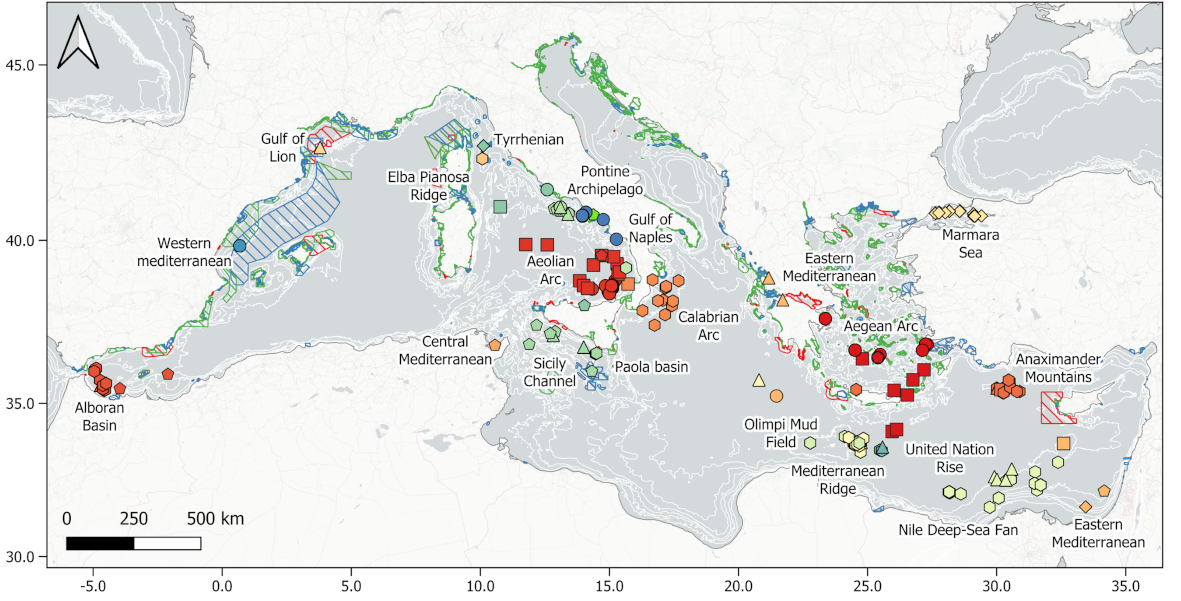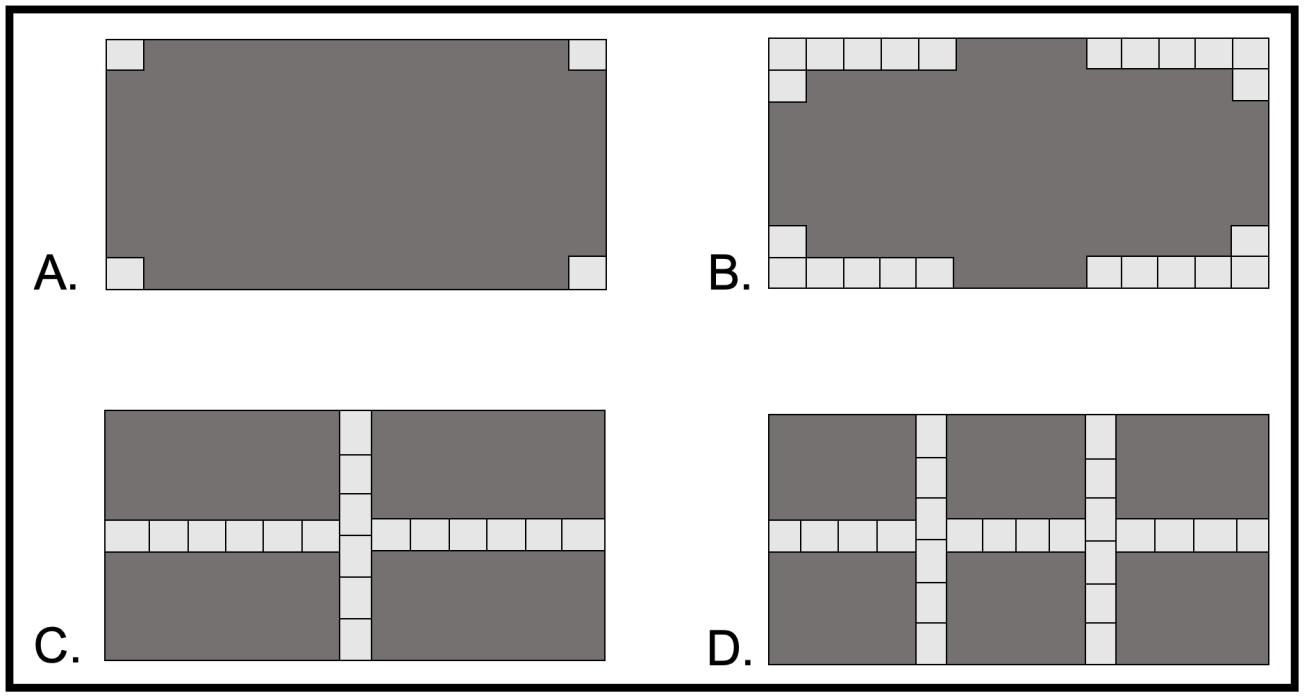Four more articles have now been published in the IABO Hub, including one from Hub Editorial Team member Valentina Costa. These articles follow on from the IABO Hub’s first published research article “Evaluation of DNA metabarcoding for identifying fish eggs: a case study on the West Florida Shelf“ by Professor Mya Breitbart and colleagues. You can read our full interview with Prof. Breitbart here.
We asked the authors of each of the new papers to summarize their key findings:
Volcanic-associated ecosystems of the Mediterranean Sea: a systematic map and an interactive tool to support their conservation
Valentina Costa, Valentina Sciutteri, Pierpaolo Consoli, Elisabetta Manea, Elisabetta Menini, Franco Andaloro, Teresa Romeo, Roberto Danovaro
Valentina Costa: This Systematic Map discusses the current state of knowledge regarding volcanic-associated marine ecosystems, including hydrothermal vents, cold seeps, pockmarks, and seamounts, which are widely distributed on the ocean floor. The available information about these systems is still limited, scattered, and unsuitable for supporting conservation and management decision-making processes. The literature search conducted on the Scopus database and the platform Web of Science yielded evidence of more than 100 different volcanic-associated marine ecosystem sites, mostly distributed in shallow waters, and discovered that less than 30% of these sites are currently included in protected or regulated areas. An updated database, searchable through a user-friendly R-shiny app MH-shiny, was developed with the main aim to guide the implementation of more effective protection measures for these ecosystems in the Mediterranean Sea. The study’s findings could also aid policymakers in defining priorities for future protection measures to achieve the targets of the UN Agenda 2030.

Location of the observations (10.7717/peerj.15162/fig-3)
Bio-economic indicators of fisheries: impact of variations in landings and fish size on market prices in Istanbul Fish Market
Taner Yildiz, Aylin Ulman, F. Saadet Karakulak, Uğur Uzer, Nazli Demirel

Annual changes in landed catch and unit market real prices (10.7717/peerj.15141/fig-3)
Taner Yildiz: Turkey is incredibly rich in history, but it is not very rich when it comes to reliable fisheries data. Commercial fisheries data are collected from both small-scale and large-scale fisheries, but these data come with some flaws, such as not being inclusive of all species, along with well-known underreporting trends from fishers. This study used a novel approach, accessing records of Istanbul’s and Turkey’s largest fish market to examine what drivers are influencing changes to fish prices. A total of 39 wild caught species were examined for their landed catch amounts, and their fish sales prices from 2006 until 2019. Generally, larger fish tend to be more expensive, increasing in price from anchovy to horse mackerels to bonitos to turbot. Maximum fish length was the best predictor for higher prices at the market. However, as medium and large pelagic fish in Turkey are now scarce, the last two remaining viable medium-pelagic species (bonito and bluefish) showed different trends than the other species, with their highest prices relating to highest catch season for bonito and the open fishing season for bluefish.
Sercan Yapıcı (Academic Editor): Fishing is mostly evaluated by the damage that fishing gear causes to fish stocks and habitats. The bio-economic data provided through fisheries gives us information on many different areas such as stock levels, consumer habits, and the policies pursued by relevant public institutions. The present article is one of the rare and valuable studies on the fishing economy in Turkey, and I am confident that this work will appeal to readers in many different fields.
Intertidal habitat complexity influences the density of the non-native crab Hemigrapsus sanguineus
Zachary W Towne, Michael L Judge, Nancy J O’Connor

Four paver types used in the field experiment (10.7717/peerj.15161/fig-1)
Nancy O’Connor: Humans have moved species around the world, either intentionally or inadvertently, for centuries. Yet we do this without understanding the potential impacts of this translocation. What determines the abundance of non-native species in a particular area? Of many potential factors, habitat characteristics are important. For animals living under piles of rocks along the shore, crevice space between rocks can affect how many live there. We created shelters with different amounts and arrangements of crevice spaces and placed them along a rocky shoreline in Massachusetts, U.S.A. We found that Asian shore crabs (Hemigrapsus sanguineus) were more abundant under shelters with the most complex crevice space, with a high number of internal corners. This finding suggests that resource managers concerned with the spread of the Asian shore crab should consider habitat characteristics when surveying shorelines for their presence.
Taxonomical and functional analyses of epifaunal polychaetes associated with Mussismilia spp.: the effects of coral growth morphology
Marcos Nogueira, Wagner Magalhães, E Eduardo Mariano-Neto, Elizabeth Neves, Rodrigo Johnsson
Marcos Nogueira: It is well-known that habitats that are more complex structurally may house a diverse fauna, provide shelter to avoid predation and facilitate access to resources. In order to test this, we evaluated in two coral reefs how three different species of corals with distinct morphology could influence the assemblages of marine worms that live on them. Our analysis showed significant differences for the number of worm species and their abundances among the three coral species (higher values for Mussismilia harttii, the coral that shows a more complex structure), but no differences were recorded when compared between the two coral reef areas studied. When we evaluated the functional attributes of the polychaete assemblages, no statistical differences were observed among coral species or between reefs. On the other hand, some individual marine worms’ functional traits showed differences among Mussismilia species, suggesting that the effect of different coral growth structures over functional aspects may influence particular groups of worms. We encourage future studies to include functional attributes (at an assemblage level, as in individual functional traits) as important tools to study the assemblage of organisms associated with corals.

Morphological pattern of Mussismilia species

